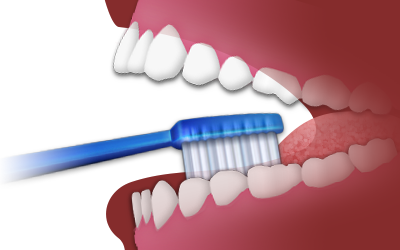Brushing and Flossing
How to Brush & Floss
The cornerstone to a good at-home oral hygiene regimen is proper brushing and flossing. Practicing excellent dental hygiene avoids unhealthy teeth and costly dental treatments.
Family Dentistry for Patients in Waldorf, MD
 At the office of Dr. Christian Johnson, DMD, we're proud to provide high-quality dental treatment to families all over the greater Waldorf, MD area. We specialize in dental care for children and adults alike, and we strive to personalize treatment to suit the unique needs of our patients. While we offer a variety of restorative and cosmetic dental procedures like fillings and dental implants, we place a focus on preventive care, helping you keep your smile healthy for a lifetime - and it all starts with brushing and flossing, the cornerstones of your oral hygiene routine.
At the office of Dr. Christian Johnson, DMD, we're proud to provide high-quality dental treatment to families all over the greater Waldorf, MD area. We specialize in dental care for children and adults alike, and we strive to personalize treatment to suit the unique needs of our patients. While we offer a variety of restorative and cosmetic dental procedures like fillings and dental implants, we place a focus on preventive care, helping you keep your smile healthy for a lifetime - and it all starts with brushing and flossing, the cornerstones of your oral hygiene routine.
How to Brush Your Teeth
Brushing your teeth is foundational to a healthy smile, and your consistency in brushing and flossing largely determines the quality of your oral health. But to truly benefit from brushing and flossing, you've got to do it right!
Start by using a soft-bristled toothbrush and a small strip of fluoridated toothpaste. Wet the brush head, then move the brush across your teeth in a small, circular motion, carefully dislodging food particles and bacteria. Be thorough with your brushing, making sure you cover every exposed tooth surface - it should take at least two minutes to brush your teeth correctly, but it may take up to several minutes depending on how clean your mouth is.
We recommend brushing your teeth four times a day - it's the best way to keep teeth healthy and avoid cavities and dental decay. You should brush in the morning after you've eaten breakfast, after lunch (or right after school, for kids), after having dinner, and right before you go to sleep.
When brushing, take care to avoid swallowing toothpaste, as it's not meant to be digested. Rinse your mouth thoroughly with clean water after finishing brushing. Don't forget to replace your toothbrush every 3 months, or as soon as the bristles start to wear down, fray, or lose their rigidity.
How to Floss
 Brushing is the first step to a great oral hygiene regimen, but you can't keep your teeth clean by brushing alone. That's because toothbrushes simply can't reach the space in between teeth, and that presents an opportunity for bacteria and tooth decay to flourish. To finish the job, you need to floss. Dental floss is a thin, waxed nylon or cotton thread that can slip between the teeth, cleaning from the top of the teeth to below gum line. You should floss daily, right before going to bed.
Brushing is the first step to a great oral hygiene regimen, but you can't keep your teeth clean by brushing alone. That's because toothbrushes simply can't reach the space in between teeth, and that presents an opportunity for bacteria and tooth decay to flourish. To finish the job, you need to floss. Dental floss is a thin, waxed nylon or cotton thread that can slip between the teeth, cleaning from the top of the teeth to below gum line. You should floss daily, right before going to bed.
To floss correctly, pull a small length of floss from the container and wrap it tightly around your middle fingers. Using your index fingers to make the floss tense, guide it down between your teeth all the way to the gum line, dislodging bits of food and plaque. Repeat this process for the next gap between the teeth, unwrapping the floss from your fingers to use a new, clean section - and don't forget to floss behind all your back teeth!
It's normal for gums to bleed a little if you're just starting flossing or haven't flossed in a while. This will subside with regular flossing. If the bleeding continues for more than a week, let us know - it may be a sign of gum disease.
Contact Your Waldorf, MD Dentist
Brushing and flossing are central to the health of your teeth, and if you're diligent in your daily oral hygiene, you can protect your smile for a lifetime. If you still have questions on oral hygiene, brushing and flossing, or your oral health in general, we'd be happy to answer them for you. If you'd like to make an appointment to visit our Waldorf, MD office, you can request one using our easy online form. We hope to hear from you soon, and we wish you luck with your daily brushing and flossing!
